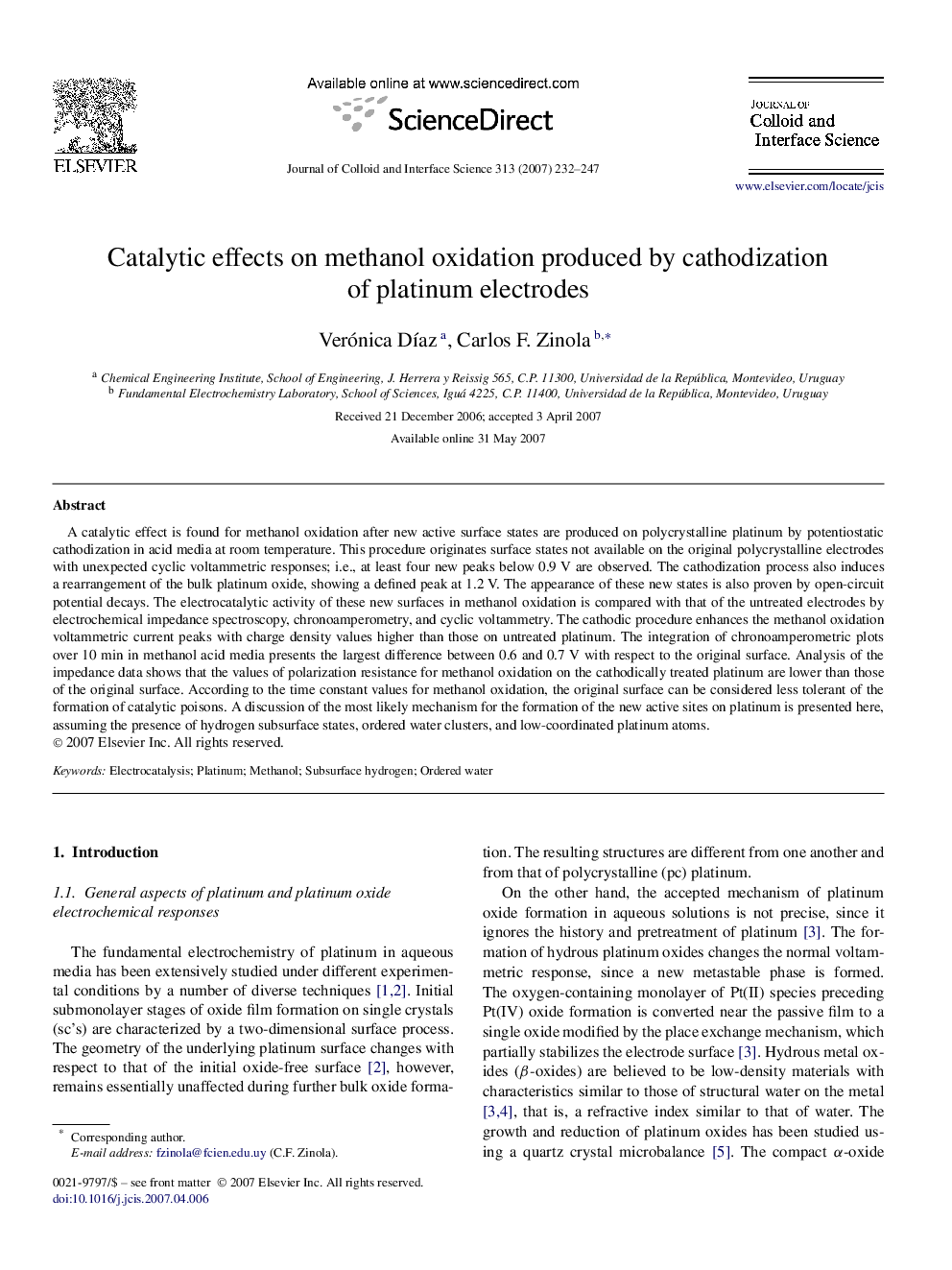| کد مقاله | کد نشریه | سال انتشار | مقاله انگلیسی | نسخه تمام متن |
|---|---|---|---|---|
| 611929 | 880688 | 2007 | 16 صفحه PDF | دانلود رایگان |

A catalytic effect is found for methanol oxidation after new active surface states are produced on polycrystalline platinum by potentiostatic cathodization in acid media at room temperature. This procedure originates surface states not available on the original polycrystalline electrodes with unexpected cyclic voltammetric responses; i.e., at least four new peaks below 0.9 V are observed. The cathodization process also induces a rearrangement of the bulk platinum oxide, showing a defined peak at 1.2 V. The appearance of these new states is also proven by open-circuit potential decays. The electrocatalytic activity of these new surfaces in methanol oxidation is compared with that of the untreated electrodes by electrochemical impedance spectroscopy, chronoamperometry, and cyclic voltammetry. The cathodic procedure enhances the methanol oxidation voltammetric current peaks with charge density values higher than those on untreated platinum. The integration of chronoamperometric plots over 10 min in methanol acid media presents the largest difference between 0.6 and 0.7 V with respect to the original surface. Analysis of the impedance data shows that the values of polarization resistance for methanol oxidation on the cathodically treated platinum are lower than those of the original surface. According to the time constant values for methanol oxidation, the original surface can be considered less tolerant of the formation of catalytic poisons. A discussion of the most likely mechanism for the formation of the new active sites on platinum is presented here, assuming the presence of hydrogen subsurface states, ordered water clusters, and low-coordinated platinum atoms.
New superactive states on platinum can be produced by potentiostatic cathodization in acid media, which are not available on original platinum. They are characterized by the appearance of the occluded hydrogen species, which later form hydroxyl subsurface states. The following scheme explains the effect.Figure optionsDownload as PowerPoint slide
Journal: Journal of Colloid and Interface Science - Volume 313, Issue 1, 1 September 2007, Pages 232–247